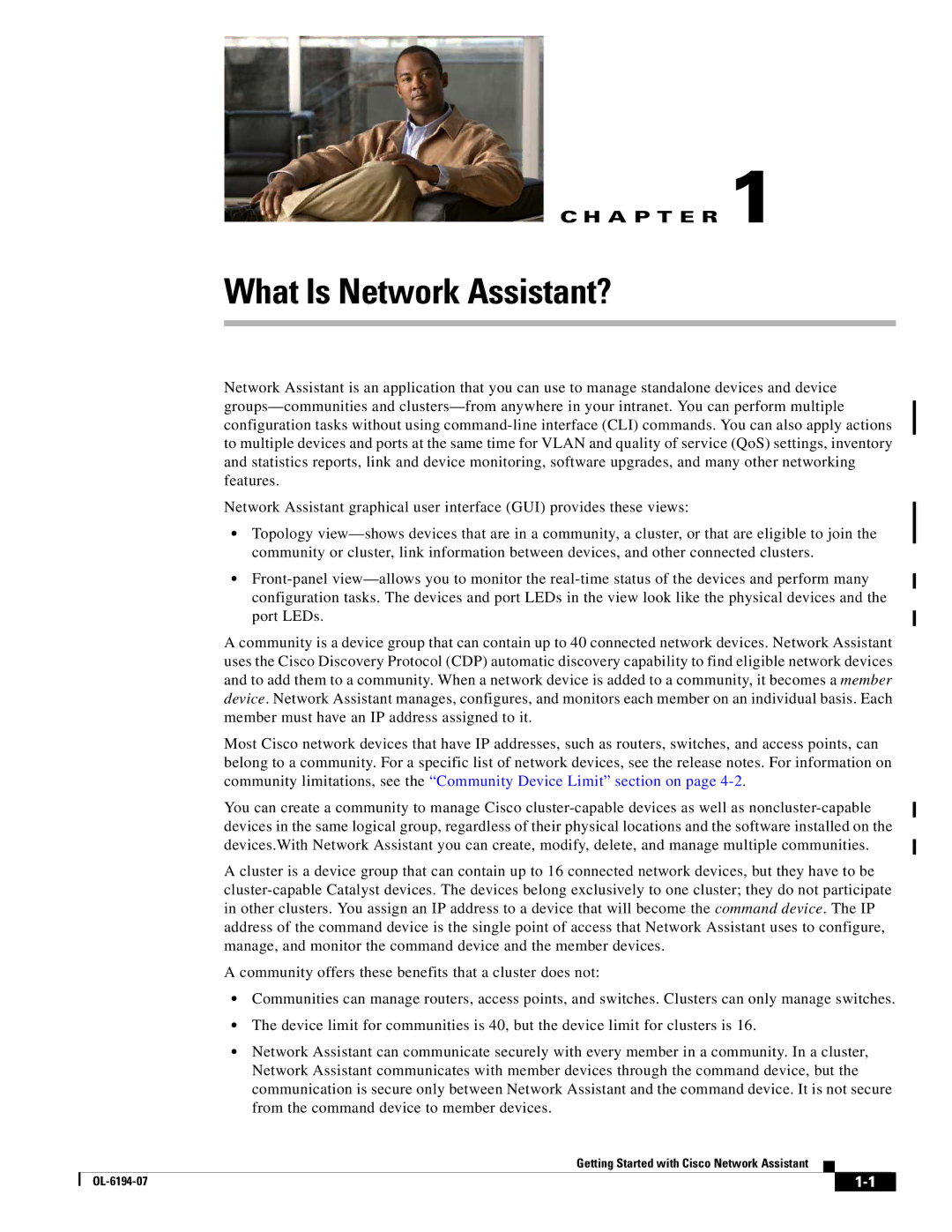
C H A P T E R 1
What Is Network Assistant?
Network Assistant is an application that you can use to manage standalone devices and device
Network Assistant graphical user interface (GUI) provides these views:
•Topology
•
A community is a device group that can contain up to 40 connected network devices. Network Assistant uses the Cisco Discovery Protocol (CDP) automatic discovery capability to find eligible network devices and to add them to a community. When a network device is added to a community, it becomes a member device. Network Assistant manages, configures, and monitors each member on an individual basis. Each member must have an IP address assigned to it.
Most Cisco network devices that have IP addresses, such as routers, switches, and access points, can belong to a community. For a specific list of network devices, see the release notes. For information on community limitations, see the “Community Device Limit” section on page
You can create a community to manage Cisco
A cluster is a device group that can contain up to 16 connected network devices, but they have to be
A community offers these benefits that a cluster does not:
•Communities can manage routers, access points, and switches. Clusters can only manage switches.
•The device limit for communities is 40, but the device limit for clusters is 16.
•Network Assistant can communicate securely with every member in a community. In a cluster, Network Assistant communicates with member devices through the command device, but the communication is secure only between Network Assistant and the command device. It is not secure from the command device to member devices.
Getting Started with Cisco Network Assistant
|
| ||
|
|
